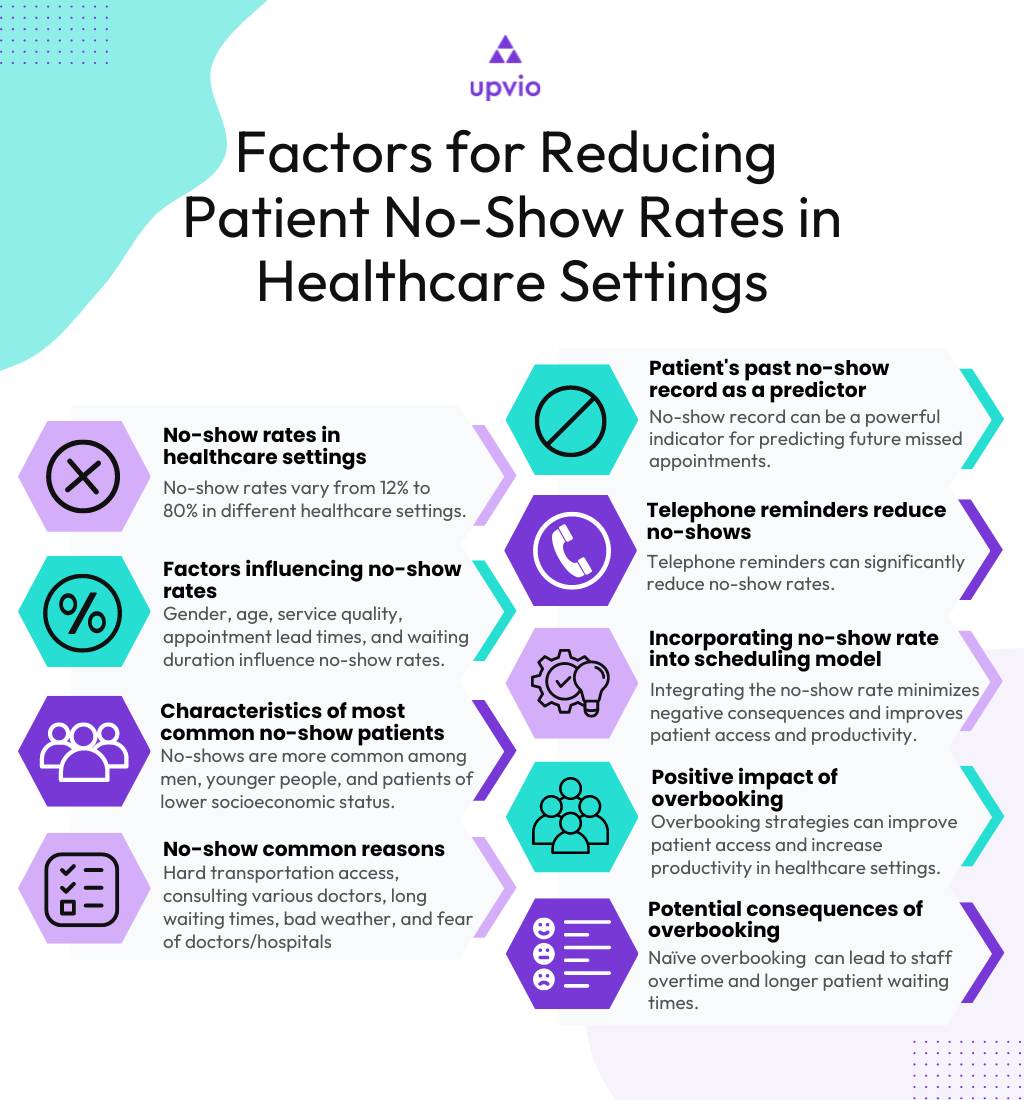How to Reduce No-Show Appointments and Drive Growth
Sep 25, 2023
Discover effective strategies to minimize no-show appointments. Learn practical tips, communication techniques, and reminders to boost attendance rates.

No-show appointments are frustrating and costly for businesses of any industry. Picture this: you meticulously plan your day, prepare resources, and allocate valuable time to attend scheduled appointments, only to be left waiting for clients or customers who never show up. Not only does it disrupt your workflow, but it also results in lost revenue and wasted opportunities. We can't underestimate the impact of no-shows on businesses, but fortunately, there is a solution at hand.
In this blog post, we're excited to introduce the "10-Step Guide to Stopping No-Shows" an e-book designed to equip businesses with the tools and strategies to combat this persistent issue. Whether you run a medical practice, salon, consultancy, or any other appointment-based business, this comprehensive guide will provide invaluable insights and practical techniques to minimize no-show appointments and maximize efficiency and profitability.
What is a No-Show and Why is it a Common Issue?
A no-show occurs when a client or customer fails to attend a scheduled appointment without prior notice or cancellation. It is a prevalent issue across various industries, affecting businesses of all sizes and types. The problem of no-show appointments stems from a combination of factors, such as forgetfulness, last-minute changes in plans, or simply a lack of consideration.
With people often juggling multiple commitments, the risk of forgetting and overlooking book appointments is higher. Additionally, the ease and convenience of online booking can lead to an increased incidence of no-shows because customers may impulsively schedule appointments without fully committing to them.
Further reading:
The Negative Consequences of No-Shows on Businesses
Regardless if it's once or one too many times, no-shows have detrimental and far-reaching impacts on businesses. Let's explore some of its negative consequences:
Lost Revenue: When a client or customer fails to show up for an appointment, it directly affects a business's revenue. Time slots that could have been filled by paying clients remain empty, resulting in financial losses.
Disrupted Workflow and Productivity: No-shows also disrupt your carefully planned schedules. They create daily gaps, leading to wasted time and decreased productivity. Moreover, your valuable resources and staff may be left idle, unable to serve clients who fail to appear.
Reduced Efficiency: No-shows can throw off the entire appointment system, causing delays and inefficiencies. Constant rescheduling or accommodating missed engagements can be time-consuming and may lead to a cascade effect on subsequent appointments and overall operations.
Damaged Reputation: Frequent no-shows can tarnish a business's reputation. Existing clients may become dissatisfied with the lack of reliability, while potential clients may hesitate to book appointments if they perceive a high risk of being stood up. Over time, this can lead to a decline in customer trust and a loss of valuable opportunities.
Statistics and Examples Highlighting the Significance of the Problem
To emphasize the significance of the no-show problem, let's consider some relevant statistics and examples:
According to a study published by the National Library of Medicine, the average no-show rate across various industries is approximately 15% to 20%. This means that for every ten appointments made, two or three are likely to result in a no-show.
In the healthcare industry, no-shows have a significant impact. The National Library of Medicine found that missed medical appointments account for an estimated $170,100 in healthcare provider revenue loss annually.
A separate article by MGMA also discussed other consequences of increasing the no-show percentage in the medical industry apart from financial loss. No-show aftermath includes healthcare professional burnout and an increased number of patients but a limited supply of providers.

Further reading:
Why Scheduling Patients Should Be Priority for Your Practice
Physician Scheduling Best Practices to Improve Your Practice
Introducing the 10-Step Guide to Stopping No-Shows
To help you win against the pervasive problem of no-show appointments, we present the 10-Step Guide to Stopping No-Shows. This comprehensive e-book has been meticulously crafted to offer practical solutions and proven techniques to help businesses overcome the challenges posed by no-shows. By following the steps outlined in this guide, you will be empowered to regain control over your appointment schedule and optimize your operations.
We'll provide breakdowns of each step in the guide and highlight key strategies, tips, and best practices to reduce no-show appointments. From identifying the root causes of no-shows to implementing effective appointment reminders and optimizing your booking process, this guide covers it all. Additionally, we will share real-life success stories of businesses that have successfully implemented the strategies outlined in the e-book, showcasing the tangible benefits of these approaches.
Get the complete 10-Step Guide to Stopping No-Shows by clicking here. Access and unlock a wealth of knowledge and practical strategies to combat the no-show challenge.
Final Takeaways
Remember, reducing no-show appointments is within your reach. With the 10-Step Guide to Stopping No-Shows, you'll gain invaluable insights and actionable strategies to tackle this challenge head-on. Say goodbye to wasted time, lost revenue, and the stress of no-shows.
We are thrilled to be part of your game plan to reduce no-show appointments and create a more efficient business. Together, we can make a difference. Stay tuned for more insightful content in the upcoming segments of our blog post series.
More related content you might find useful:
Discover how Vitals AI captures 20+ health markers in a few seconds.
Dive deeper with Types of Medical Appointment Scheduling for Your Office.
Explore Physician Scheduling Best Practices to Improve Your Practice.
Explore Best Practices for Patient Scheduling Process.
Dive deeper with Patient Appointment Scheduling Best Practices.


